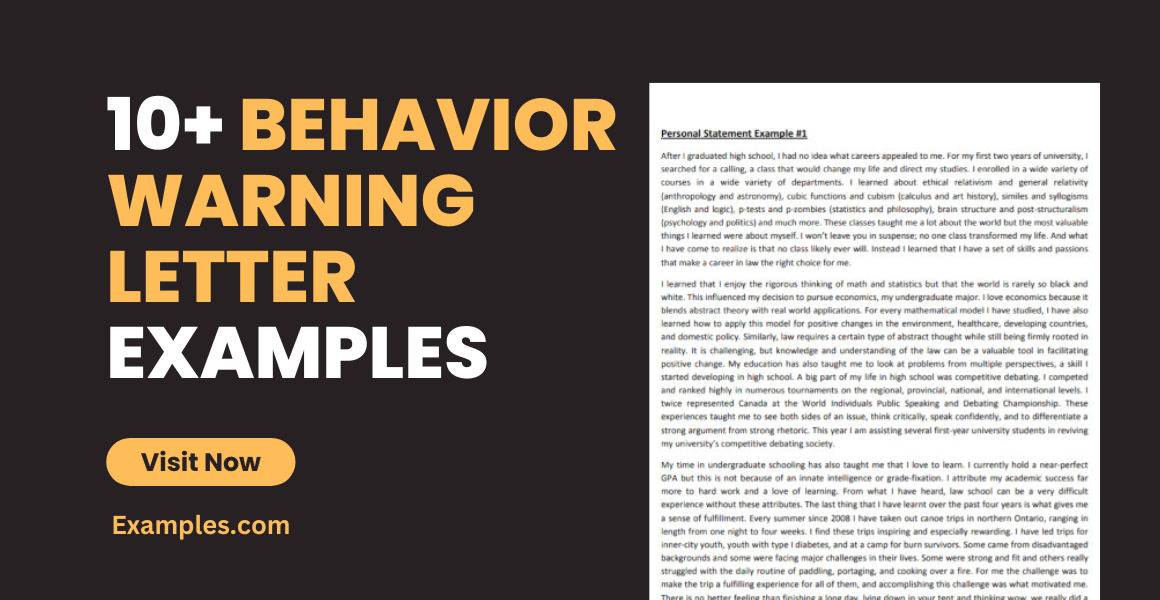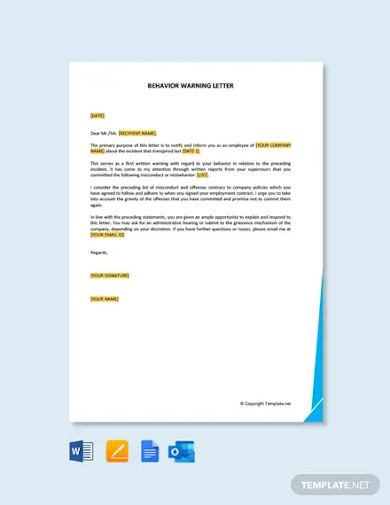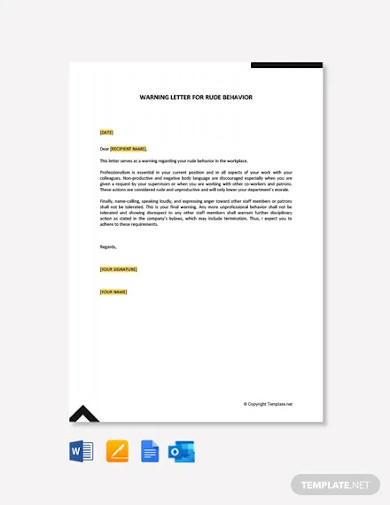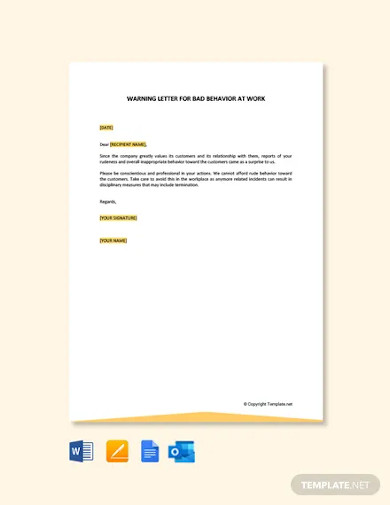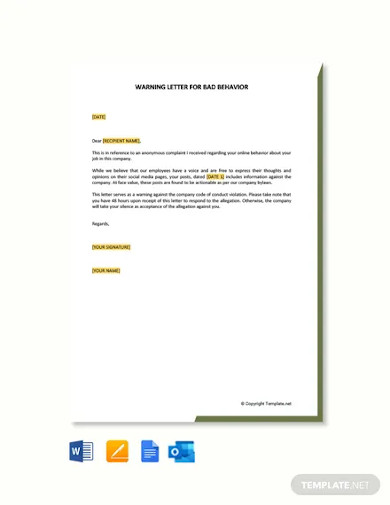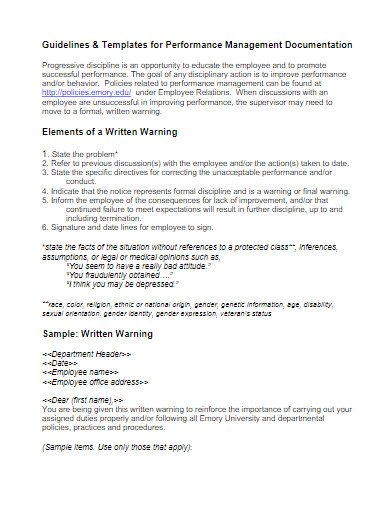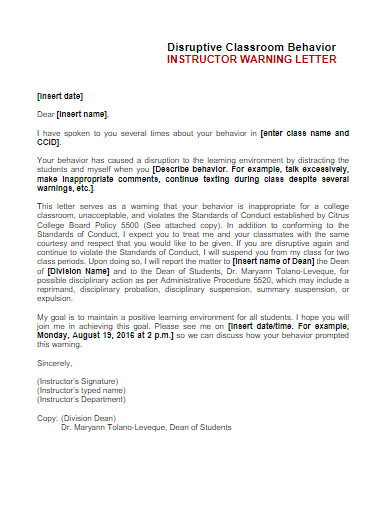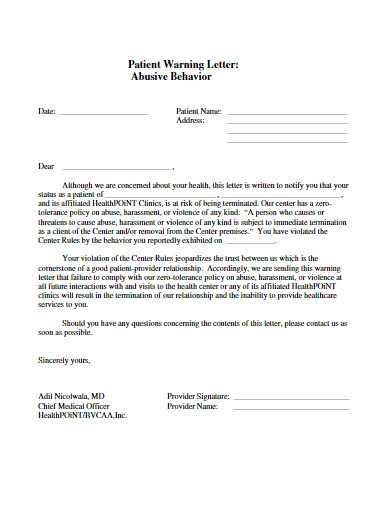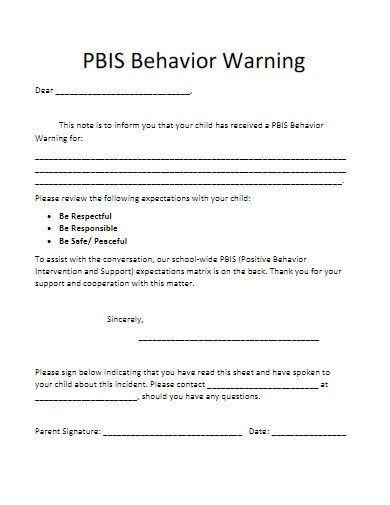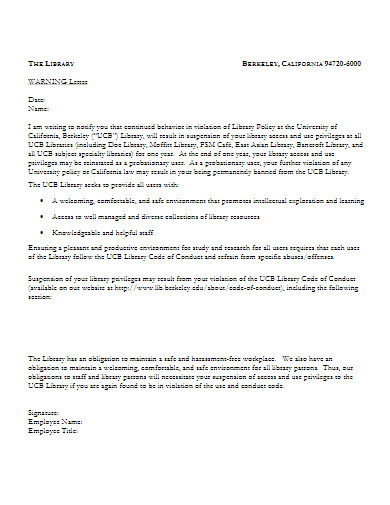10+ Behavior Warning Letter Examples to Download
Companies and schools deal with misbehaving employees and students, respectively. They do so on a regular basis. Employees and students behaving unacceptably is a common occurrence. If managers and teachers leave them unchecked, things could escalate badly in a way that affects their peers. So if you’re one those managers or teachers having problems with misbehaving employees or students, it’s time to issue them a written warning. Now that is quite a tedious task to do from scratch. So to make it easy for you, we encourage you to use our Behavior Warning Letter Examples. Take a look at their preview below!
10+ Behavior Warning Letter Examples
1. Free Behavior Warning Letter
2. Free Warning Letter For Rude Behavior
3. Free Warning Letter for Bad Behavior At Work
4. Free Warning Letter for Bad Behavior
5. Sample Behavior Warning Letter
6. Behavior Written Warning Letter
7. Student Classroom Behavior Warning Letter
8. Behavior Warning Letter Example
9. Abusive Behavior Patient Warning Letter
10. Child Behavior Warning Letter
11. Employee Behavior Warning Letter
What Is a Behavior Warning Letter?
A behavior warning letter is a formal letter addressed to employees or students for their misbehavior. It’s a letter that calls their attention to change their attitude. It could also be to inform them that they’re about to face disciplinary action for their misconduct. A behavior warning letter is what you need to start fixing behavioral problems among your employees or students. As a manager or teacher, it’s your responsibility to discipline them.
Components of a Behavior Warning Letter
For a behavior warning letter to be effective in disciplining, it should be complete with all of its components. That said, regardless if you’re preparing a student or employee warning letter, make sure to include these components:
- The date you issued or sent the behavior warning letter
- The complete name of the employee or student
- Your name as the manager or teacher issuing the warning notice for employee or student
- A thorough description or explanation of the unprofessional conduct that the employee or student committed
- A recall of the other misconducts that the employee or student committed before
- The specific company policy or school policy that the employee or student violated
- The possible sanctions that the employee or student might face
- Your signature as the sender of the behavior warning letter
How to Write a Behavior Warning Letter
According to a Forbes article by Naz Beheshti, 70% of employers improved their work environment’s atmosphere to encourage positive behavior among employees. That stat shows that physical surroundings can affect a worker’s behavior. And that doesn’t only apply to workplaces, but also classrooms. Among the action plans that you should take to improve the workplace or classroom atmosphere is by disciplining misbehaving employees or students. Their actions can affect everyone. So as a start, write them a behavior warning letter using these tips:
1. Be Straightforward in Writing
In writing confidential letters like a warning letter, it’s important to break the ice immediately. Go straight to the matter at hand after writing your formal greetings to the employee or student. As you write, stick to the topic of the letter. There should be no small talks or anything that isn’t directly related to the employee or student’s unprofessional behavior.
2. Avoid a Permissive Tone
A behavior warning letter should contain a message of conviction. That message of conviction is to prompt the student or employee to face the consequences of their actions and eradicate their bad habits. So, writing it with a permissive tone wouldn’t help. Being permissive is the exact opposite of conveying something with conviction. The should be no ifs and buts in writing a warning letter.
3. Don’t Use Insulting Words
The purpose of a behavior warning letter is to discipline employees or students, not to humiliate them. So don’t use words of insult when you write. Keep your tone professional as it should be. Belittling them for their negative behavior does more harm than good.
4. Keep the Warning Letter Short
There’s no need to prolong a warning letter. Just keep it short. After you’ve written everything that you need to say, end the letter formally. And lastly, affix your signature. After that, send the letter to the recipient employee or student privately.
Should the recipient sign the behavior warning letter?
Yes, the employee or student should sign the letter after reading it. It’s an implication that he or she acknowledges it and everything that it says. It’s also a gesture of promise that he or she will face punishment and change for the better.
Should a written warning come after a verbal warning?
A warning letter to employee for misconduct or a warning letter to the student doesn’t have to follow after a verbal warning. You can issue it right away. However, raising a verbal warning is a suitable approach at first offense. But at the second offense, you should issue a written warning.
How serious is a behavior warning?
It depends on what type of misconduct the employee or student committed. Examples of serious misconduct are verbal abuse, physical abuse, harassment, being disrespectful to superiors, and insubordination. In fact, those are grounds for expulsion or immediate employment termination.
Dealing with problematic employees or students is a major headache for every organization or institution. But as professionals, we embrace diplomatic approaches and due process in handling such people. An excellent tool to do that is a behavior warning letter. So take note of what you’ve learned here and download at least one warning letter sample from us.


